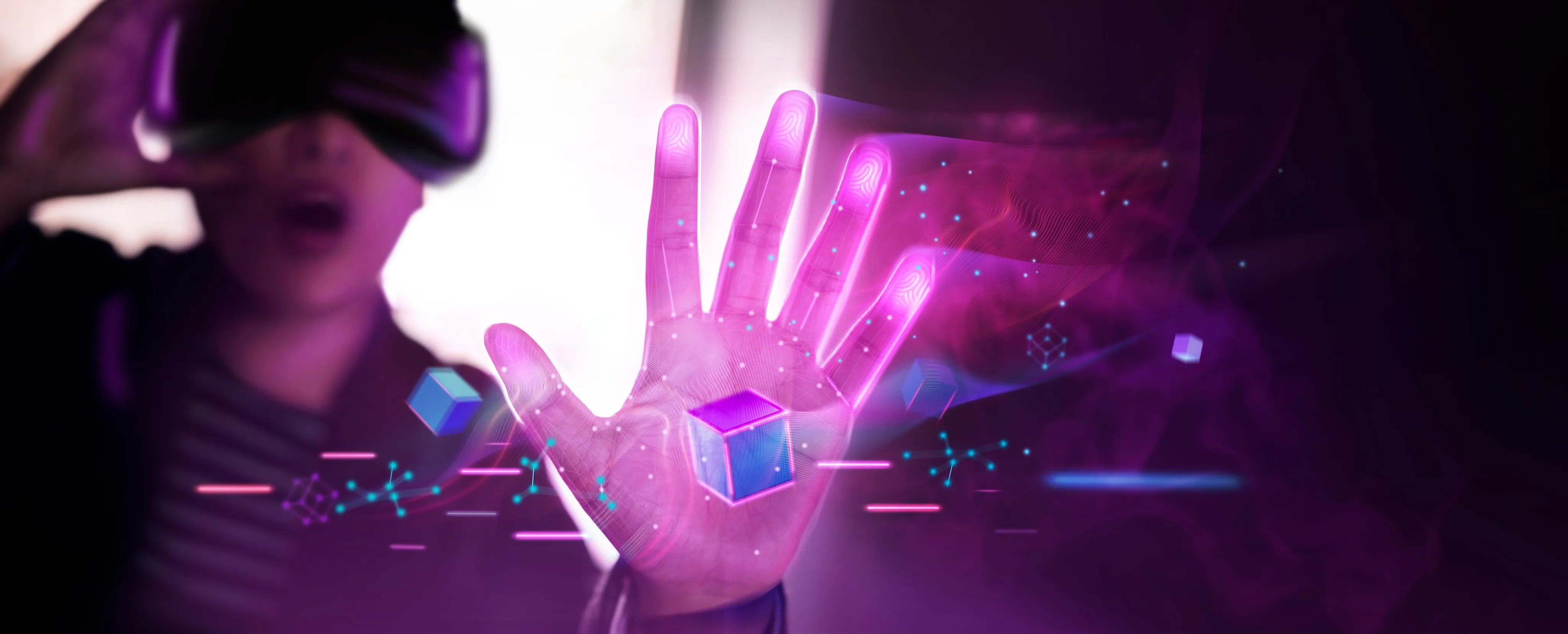
Over the next few years, the metaverse is expected to manifest itself primarily through virtual reality – an alternative, digital world that can be used for a variety of personal and enterprise purposes. Although it is still taking shape, the metaverse has the potential to revolutionize our social interactions, business dealings, and the internet economy at large.
Fusing physical and digital worlds
Being one of the latest tech buzzwords, the metaverse is evolving fast out of its 1990s sci-fi origin. Although it lacks a concrete, all-encompassing definition compared to today's scope, the metaverse is commonly conceptualized as a network of immersive digital spaces where people may interact, play, work, and shop. In short, the metaverse allows authentic and natural interactions on the virtual ground by adding a three-dimensional AI-driven layer to the web functions. Its creation is an essential response to today's constantly evolving society, especially in the new normal where contactless interactions are normalized.
From a social standpoint, such immersive virtual experiences could assist people in forming communities based on shared values and expressing themselves even from a distance. Under the business scope, metaverse enables hybrid work and remote collaboration across devices through mixed reality applications. The gaming industry is another concrete embodiment of this newest tech phenomenon, particularly for its power to deliver vastly enhanced immersive gaming experiences at more extended hours. In other words, what the metaverse offers are impacts exerted at a convention-breaking level.
Artificial Intelligence in the metaverse
The new metaverse world will undoubtedly contain a vast amount of data generated by artificial intelligence (AI). AI technologies are extensively used to collect and analyze data, learn from previous patterns, and assist in the creation of new creative processes and applications. By combining AI with other technologies like AR/VR and blockchain, the metaverse can construct secured, scalable, and realistic virtual worlds on an always-on platform.
An AI engine can analyze 2D user images or 3D scans to develop a highly realistic simulated rendition of the user profile. AI could also assist in creating digital humans, namely AI-enabled characters that can react and respond to users' actions in the VR world. These characters are supported by Natural Language Processing (NPL), an AI technology that breaks down natural languages, transforms them into a machine-readable format, and comes up with a response in the user's preferred language. This process happens in a fraction of a second, facilitating a universal digital world without any language barriers.
The AI influence sphere does not stop there. It expands to create the world's fastest supercomputers capable of running ultrafast gaming to instant and seamless translation of mind-bending large quantities of text, images, and videos at once. From 2021 to 2026, the supercomputer market is predicted to increase at a compound annual growth rate of roughly 9.5 percent [1].
Blockchain-enabled opportunities
Many blockchain-based systems now use non-fungible tokens and cryptocurrency to create, own, and monetize decentralized digital assets. Due to the inherent flaws of centralized data storage, blockchain exists as a decentralized, distributed database secured by encryption, allowing users access to any digital place, particularly in a blockchain-based metaverse.
The current blockchain technology offers extensive scalability, interoperability, computational personalization, and security that enable a simple economic system through strong DeFi (Decentralized Finance). A few basic aspects that make blockchain an absolute essence for the development of the metaverse:
- Decentralized exchanges (DEX) or Marketplace that operates in a decentralized and trustless manner.
- Cross-chain Bridges to transfer assets across different chains.
- Lending Protocol for capital borrowing.
- Payment dApps (decentralized applications) to transfer assets from the physical world into the crypto market.
One of the most visible applications of blockchain technology in the metaverse is virtual currencies, which has been a common practice for video gamers. Residents in the metaverse will soon be able to shop in virtual storefronts and dress up their avatars.. Possibilities for personalization are tremendous as users can purchase, lend, invest, or trade virtual equivalents of everything that can be bought in the actual world.
Future in the metaverse
Although it is still in its infantry stage of development, the potential of metaverse being the next-big-thing has enticed tech giants to put down their bets. Million-dollar transactions are already taking place to secure digital lands, and it's only the beginning. The market is forecasted to be worth $1 trillion in yearly revenue and could compete against Web 2.0 companies with a market value of more than $15 trillion [2].
Reference:
[1] https://www.mordorintelligence.com/industry-reports/supercomputer-market
[2] https://grayscale.com/wp-content/uploads/2021/11/Grayscale_Metaverse_Report_Nov2021.pdf






























